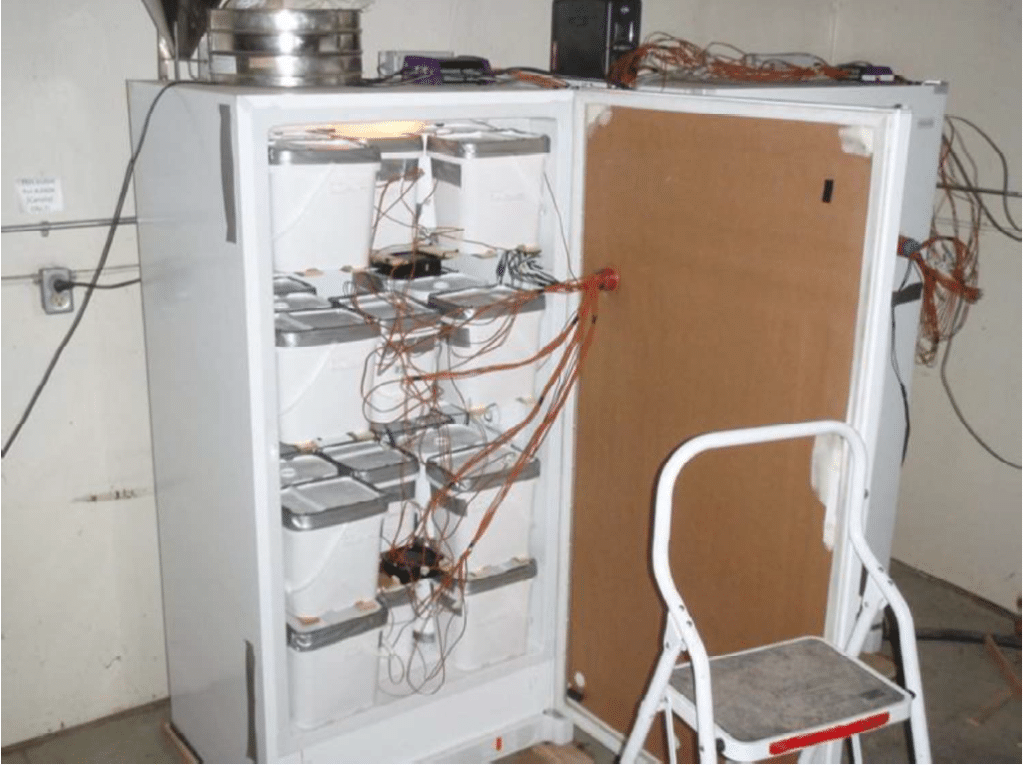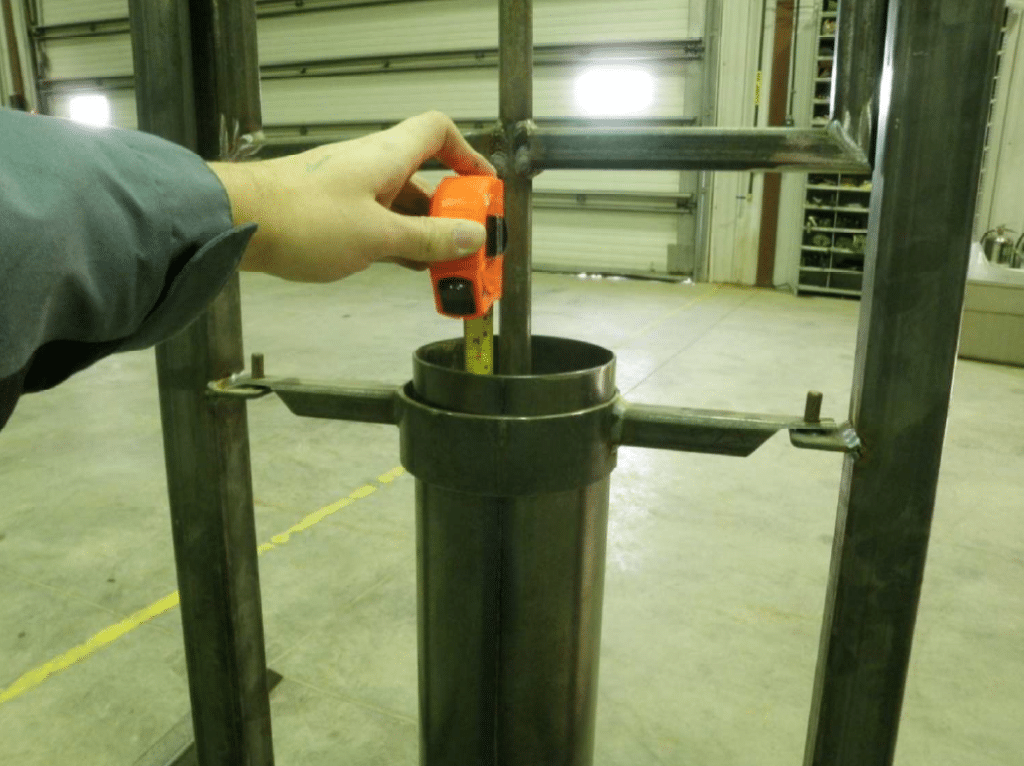Key Result
Small-scale storage had some quality changes, but none exceeded accepted tolerance limits. It was also determined that compression forces experienced by canola seed in tall bins (up to approximately 100 feet tall) are not detrimental to canola.
Project Summary
Background

Canola is a major cash crop in Saskatchewan and has steadily increased in acreage seeded each year. Producers are now growing canola with much higher oil content compared to 10 years ago. The current recommendations for safe storage of canola are based on previous varieties, which had much lower oil content than those commonly grown today. As a result, some storage issues that have arisen have been blamed on changes to canola seed from the increased oil content.
Additionally, bin size has increased in conjunction with higher oil content seeds causing concerns regarding the effect of compaction and compression due to the weight of canola in taller bins.
Objective
This project aimed to establish seed condition criteria and environmental conditions that could be recommended as safe for long-term storage of canola. It also looks at the possible impact of large storage bins on high oil content canola. More specifically, the effect of seed moisture content (MC) and storage temperature on seed oil quality of four different canola samples was investigated.
Trials

Samples of green, clean, standard, and high oil content canola seed were conditioned to seven different MC and stored at five different temperatures for approximately four months. The temperature within all 140 test samples was monitored for an increase that might indicate spoilage. Two months after testing began the samples were tested for Acid Value (AV), Free Fatty Acid (FFA), Peroxide Value (PV), and P-Anisidine Value (ANV). These values were compared with tests done on the initial base samples to determine if oil quality had changed.
Lab results, and physically inspection of the samples showed there had been spoilage in the form of mold growth in several samples. However, there was no indication of spoilage from the temperature traces within the samples. Oil quality tests indicated that oxidation and oil quality deterioration processes had begun but had not exceeded accepted tolerance limits.
Additional tests to establish the effect of canola compression under its own in weight in tall bins was also performed. A compression test stand was developed to simulate the
compression load of up to a 30.48 metres (100 feet) column of grain. Samples of standard and high oil content canola were monitored under load, and measurements of compressed displacement were recorded. Samples were inspected for signs of oil exudation, and after compression testing, were sent for germination testing. None of the tested samples showed any negative effect due to the compression.


Conclusions
Small-scale storage testing
- Based on the mold growth during the small-scale storage tests, it appeared that canola would spoil under warmer storage conditions. However, temperature monitoring of these samples did not indicate a coincident increase in temperature with this spoilage.
- Depending on how the oil quality test results are analysed, the samples suggest that oxidation processes may have been active, but oil quality did not deteriorate beyond industry acceptable limits. It is unknown whether oxidation was progressing at a rate that would exceed defined limits under longer storage terms or not.
- The lack of firm trends makes it difficult to draw definite conclusions or storage recommendations. The AV data indicates high oil content canola appears to begin oxidation processes at lower storage temperatures and MC, but still within acceptable maximums.
- Updating canola storage temperature and MC guidelines based on this data would be preliminary. The data is variable and does not support clear trends based on seed oil content and dockage on MC.
- Also, without temperature rise as a spoilage indicator, there is concern about the test procedures and parameters to replicate real world conditions.
Structural Integrity (Compression) Testing
- The results of the structural integrity testing indicate that compression forces experienced by canola seed in tall bins (up to approximately 100 feet tall) are not detrimental to canola. The data collected suggests that compression is not extensive enough to corrupt the structure of canola seeds to a degree that would negatively affect germination.
- Some deformation of seed shape may be experienced, especially with increased MC, but seed coat rupture or oil exudation do not appear to be common. Higher seed MC seems to correlate with increased compression displacement (compaction), but decreased germination was not evident.
- Effect of seed oil content on structural integrity was not conclusive, but no indications that higher oil content is related to increased seed damage (germination, rupture, and oil exudation) exist. Storage of high oil content canola in large, tall bins does not appear to be a risk to seed integrity, based on these tests. Different MC, temperatures, seed varieties, etc., may produce different results.







